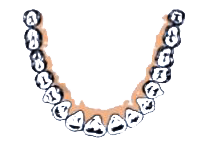The characteristics given below are associated with
(i) Body is covered by dry and cornified skin, epidermal scales or scutes
(ii) They have no external ear
(iii) Crawling, creeping habit
(iv) 2 chambered heart.
reptile
bird
amphibian
Osteichthyes
The correct Answer is:A
Step by step video, text & image solution for The characteristics given below are associated with (i) Body is covered by dry and cornified skin, epidermal scales or scutes (ii) They have no external ear (iii) Crawling, creeping habit (iv) 2 chambered heart. by Biology experts to help you in doubts & scoring excellent marks in Class 11 exams.
Updated on:21/07/2023Topper's Solved these Questions
Similar Questions
The characteristics given below are associated with
(i) Body is covered by dry and cornified skin, epidermal scales or scutes
(ii) They have no external ear
(iii) Crawling, creeping habit
(iv) 2 chambered heart.
View SolutionLabel the below given Figure 2.1 as directed below in (i) to (iv) and give the name of each type of teeth.

(i) The cutting and biting teeth as 'A'
(ii) The piercing and tearing teeth as 'B'
(iii) The grinding and chewing teeth as 'C'
(iv) The grinding teeth present only in adult as 'D' .
View Solution
Knowledge Check
Assertion :- The body of reptiles is covered by dry and cornified skin, epidermal scales or scutes.
Reason :- Reptiles are true terrestial vertebrate.AIf both Assertion & Reason are True & the Reason is a correct explanation of the Assertion.BIf both Assertion & Reason are True but Reason is not a correct explanation of the Assertion.CIf Assertion is True but the Reason is False.DIf both Assertion & Reason are false.Select the option with a correct representation of an animal to the below-mentioned class of vertebrates:
I. The jawless animal in which the body is devoid of scales and paired fins.
II. They have four pairs of gills that are covered by an operculum.
III. The body is covered by dry and cornified skin, epidermal scales or scutes.
IV. Skin is dry without glands and long bones are hollow with air cavities.AI - Calotes , II - Neophron , III - Clarius , IV - LampreyBI - Clarius, II - Lamprey , III - Neophron , IV - CalotesCI - Lamprey , II - Clarius, III - Calotes , IV - NeophronDI - Lamprey, II - Calotes , III - Clarius, IV - NeophronWhich of the following is/are not the characteristics of the Class Osteichthyes?
(i) Body is streamlined and mouth is terminal.
(ii) Gills are convered by operculum.
(iii) Skin convered with cycloid and placoid scales.
(iv) Many of them are viviparous.A(iv) onlyB(iii) and (iv)C(i), (iii) and (iv)D(i) and (ii)
Read the characteristics given below.
I . Disc-shaped
II. Enucleated
III. Transport oxygen in body
IV. Manufactured in red bone marrow.
These characteristics represent, which blood cell of living beings?
View SolutionRead the characteristics given below.
I. Disc-shaped
II. Enucleated
III. Transport oxygen in body
IV. Manufactured in red bone marrow.
These characteristics represent, which blood cell of living beings?
View SolutionIdentify the correct sequence of plants in the order of character given below
(i) Sporophyte with foot, intercalary meristem and capsule
(ii) Gemma cups on thallus
(iii) Sorus covered by false indusium
(iv) Embryophytic, tracheophytic, archegoniate
View SolutionRead the given statements characterizing certain types of animals. Select the option which correctly exemplifies each of these types.
(i) Animal having external gills
(ii) Animal having internal gills
(iii) Animal showing tracheal respiration
(iv) Animal revealing buccopharyngeal respiration
View SolutionFour characters ( a -.d) are given below . Which two are CORRECT about phylum arthropods ?
(i) it is the largest phylum of animal kingdom .
(ii) one third of all named species on earth are arthropods.
(iii)They are bilaterally symmetrical , triploblastic and segmented animals .
(iv) The body is covered by calcareous exoskeleton.
View Solution
